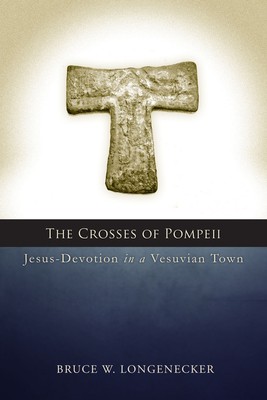
- We will send in 10–14 business days.
- Author: Bruce W Longenecker
- Publisher: Fortress Press
- ISBN-10: 1451490127
- ISBN-13: 9781451490121
- Format: 15.2 x 22.6 x 2.3 cm, minkšti viršeliai
- Language: English
- SAVE -10% with code: EXTRA
Reviews
Description
Through a twist of fate, the eruption that destroyed Pompeii in 79 CE also preserved a wealth of evidence about the town, buried for centuries in volcanic ash. Since the town's excavations in the eighteenth century, archaeologists have disputed the evidence that might attest the presence of Christians in Pompeii before the eruption.
Now, Bruce W. Longenecker reviews that evidence, in comparison with other possible evidence of first-century Christian presence elsewhere, and reaches the conclusion that there were indeed Christians living in the doomed town. Illustrated with maps, charts, photographs, and line drawings depicting artifacts from the town, The Crosses of Pompeii presents an elegant case for their presence. Longenecker's arguments require dramatic changes to our understanding of the early history of Christianity.
EXTRA 10 % discount with code: EXTRA
The promotion ends in 23d.07:48:02
The discount code is valid when purchasing from 10 €. Discounts do not stack.
- Author: Bruce W Longenecker
- Publisher: Fortress Press
- ISBN-10: 1451490127
- ISBN-13: 9781451490121
- Format: 15.2 x 22.6 x 2.3 cm, minkšti viršeliai
- Language: English English
Through a twist of fate, the eruption that destroyed Pompeii in 79 CE also preserved a wealth of evidence about the town, buried for centuries in volcanic ash. Since the town's excavations in the eighteenth century, archaeologists have disputed the evidence that might attest the presence of Christians in Pompeii before the eruption.
Now, Bruce W. Longenecker reviews that evidence, in comparison with other possible evidence of first-century Christian presence elsewhere, and reaches the conclusion that there were indeed Christians living in the doomed town. Illustrated with maps, charts, photographs, and line drawings depicting artifacts from the town, The Crosses of Pompeii presents an elegant case for their presence. Longenecker's arguments require dramatic changes to our understanding of the early history of Christianity.


Reviews